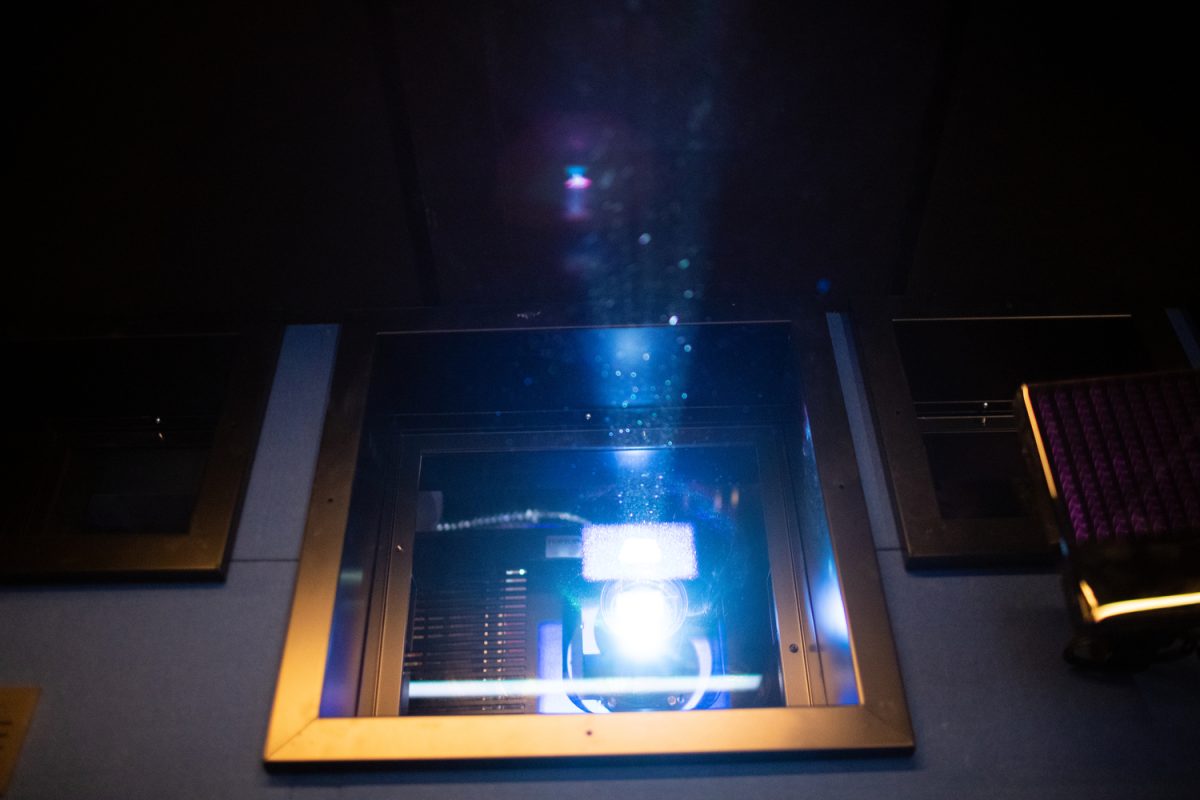“The throne of the Holy See is vacant.”
The newly released film “Conclave” begins with a bang, hooking audience members with the unexpected death of the pope. As the former pope is taken away in a white body bag, the cardinals grapple with the new issue in front of them: Who will take his place?
Director Edward Berger centers his story around a British cardinal, Lawrence, who is also the dean in charge of the election of the next pope, called the Conclave. Lawrence, who wrestles with his faith throughout the film, scurries through the twists and turns of the drama unleashed by the sequestered cardinals.
Prior to the pope’s passing, Lawrence was declined resignation by the pope, who asserted that he is not a shepherd, but rather a manager. At first disappointed with the role, Lawrence finds himself quite comfortable within it when the Conclave begins.
On the night before the first day of the Conclave, Lawrence delivers a speech. In this speech, he asserts that his audience cannot be afraid of certainty because faith grows in the crevices of uncertainty — faith walks hand-in-hand with doubt. “Conclave” embraces uncertainty in times of division, speaking to politics beyond the Vatican.
The cardinals have varying opinions on the future of the church. Cardinal Bellini is more progressive and open-minded, while Cardinal Tedesco embraces the traditionalist side of the church, hoping to reinstate the Latin Mass. Cardinal Adeyenini remains hostile toward homosexuality, and Cardinal Tremblay was apparently asked to resign in his last meeting with the late pope.
These contrasting personalities lead to morally corrupt behavior in times of crisis. Regardless of their shared faith and dedication to the church, the cardinals find justification in the church’s future to perform questionable behaviors. Even those closest to moral and religious high ground get caught up in the dynamics of greed, power, and legacies.
As the days and nights pass without decision, schemes and tactics unfold. The cardinals begin turning against one another in hopes to gain more electoral support for themselves. Berger unleashes secrets among the cardinals as he constantly reshuffles the narrative throughout the film.
The high-contrast lighting and dull color palette embrace the film’s ominous tone. The church has a life of its own as the shadows allude to the hidden secrets in the institution and its characters. The combination of the mise-en-scene and intense violin music creates a suspenseful atmosphere as Lawrence grapples with managing the tasks in front of him.
While this film is talk-heavy and thematically driven, the mise-en-scene prompts urgency and suspense, investing audiences in the thriller. The slowness of the film allows the audience to engross themselves in the ominous and sinister environment while the characters talk to one another. There is an overarching sense of darkness and mystery due to the environment that surrounds the characters and plot.
Furthermore, Berger utilizes a fascinating cinematography style. He does not depend on close-up shots; instead, the majority of his camerawork involves the camera being farther away from the characters. There are a lot of slow-moving shots, which promote a sense of voyeurism. Through these techniques, the audience is given the role of being the fly on the wall; we are able to watch the chaos unfold from a distance.
A thematically driven piece, “Conclave” evokes questions regarding the relationship between power and corruption.
Released around election week, “Conclave” embraces discussions regarding division through power ascension, as well as tradition versus modernity. In times of division, how can we unify in hopes of bettering our community?



